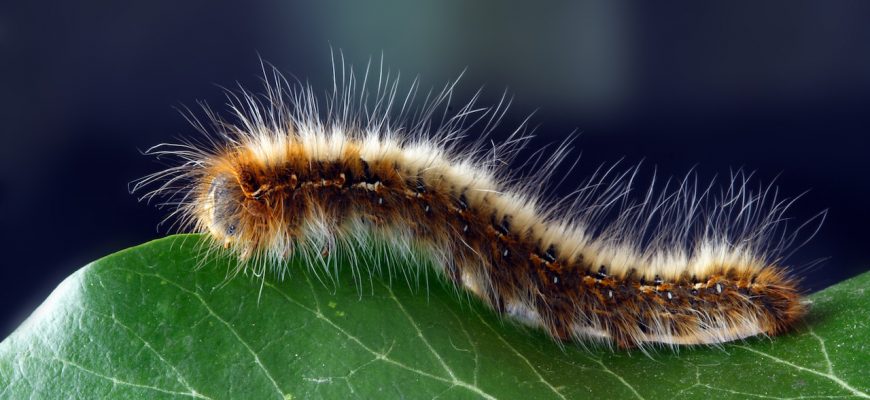Biological treatments to fight processionary caterpillars. An expert view.
Processionary caterpillars are not just vermin: landscape designers and gardeners consider them to be public menaces which can cause serious harm to trees, man and animals. Over the last five years, in France and Europe, global warming has caused these caterpillars to grow more rapidly. But what treatments can be used to fight them?

Processionary caterpillars are not just vermin: landscape designers and gardeners consider them to be public menaces which can cause serious harm to trees, man and animals. Over the last five years, in France and Europe, global warming has caused these caterpillars to grow more rapidly. But what treatments can be used to fight them? How can this vermin be eliminated without pesticides? To answer this question, we interviewed Jocelyne Camerani, owner and director of La Mésange Verte, who was awarded the Paysalia Innovations 1st prize in the Sustainable Development category for the invention of her collier Écopiège® collar designed to fight processionary caterpillars.

Also discover how to maintain green spaces without chemicals!
Why is the processionary caterpillar dangerous?

Jocelyne Camerani, owner of La Mésange Verte
The processionary caterpillar has millions of irritant hairs released whenever it feels stressed. Shaped like harpoon, these microscopic hairs stick to the skin and clothing with the least air draught. As a reflex, you try to scrape them off which breaks the hair’s envelope, releasing the extremely allergy-provoking histamines it contains.
The first clinical symptoms occur in less than five hours… or even more quickly! They can be “simple” rashes on the skin and even more serious burns and ulcerations requiring medical treatment. These histamines also cause respiratory tract irritations, respiratory distress and irritate the eyes. The gravity of the situation depends on the degree of contamination as well as each individual’s sensitivity.
On pets, which tend to take the caterpillars in their mouth, one observes particularly dangerous inflammations of the oral and digestive systems ranging from simple inflammation to necrosis. Unfortunately, this inflammation is also observed in young children who put a caterpillar or contaminated objects in their mouths. Direct contact with a caterpillar is dangerous – and so is indirect contact via a contaminated object or soiled grass.
And what threat do processionary caterpillars pose to trees?
Processionary caterpillars eat conifer and pine tree needles. When trees are partially defoliated, they become weak and growth is slowed… When defoliation is total and repeated trees can die, attacked by insects benefitting from the tree’s weakness.
When do caterpillars strike?
In France, the period is generally between February and March. However, processionary caterpillars are very sensitive to climate change and global warming! For this reason, they are used as biomarkers in this field. Over the last five years, their development in some regions has been earlier. Caterpillars can start processing in October thru to the end of May.
The risk period which used to be two months can today be six months a year in some places. It should be said that caterpillars like a temperature of 10 to 20°C to develop. All extreme or negative temperatures are unfavorable. Mild winters support their survival in many areas. They develop earlier and cover wider swathes of territory. Recently, the plantation of pines in cities and their neighborhoods makes it easier for them to progress.
How can we fight processionary caterpillars? What biological treatments can we use to eliminate them?
The ideal way is to combine several protocols as the caterpillar passes thru several stages of evolution and so all methods are not always equally effective at a given time. Moreover, it is active at night and remains in its nest during the day, which makes it less sensitive to some predators (such as Eurasian hoopoes, wasps, flies, etc.). Fortunately, there is a wide range of protocols and in particular biological solutions.
- Bacillus thuringiensis bacterium spray
Bacillus thuringiensis destroys the larvae. Initially it was sprayed from aircraft onto big areas and woodlands to create broad bacteriological cover quickly… But, for several years, spraying has been virtually forbidden. Now only ground-based spray guns are authorized. To cover big zones, you thus need more time and resources, which makes the job more complex. If correctly implemented, this method can reduce the presence of caterpillars by 80%… but you need specialist know-how!
- Caterpillar removal
This age-old method consists in cutting down the nests in the trees with shears or hitting them with a pole. Unfortunately, nests are often high up in the trees… which makes the job even more difficult! Caterpillar removal requires specialist know-how and full body coveralls.
- The Ecopiège® collar
The Ecopiège® collar is a lure. It is a physical barrier which stops caterpillars when they start to process, i.e. when they leave their nest to go down to the ground, dig in and become pupae… This is when contacts with people and animals are most frequent.
Fixed on the tree, the collar has a bag filled with earth into which the caterpillars dig. Thinking they’ve got to the ground the caterpillars dig in and begin the process of becoming chrysalis. Once they’ve been caught in the fully “hairtight” bag, take it down and burn it without opening it. This bag prevents irritations caused by the caterpillars and enables the destruction of the colonies. The success rate is over 97%. And the collar is environmentally-friendly as predators can help themselves directly in this “pantry”. A perfect combination of effectiveness and ecology!
- Pheromone traps or pheromone shoots
Pheromones are used when the caterpillars become butterflies and start to mate. Scents which reproduce synthetically the sexual odors of female butterflies are diffused and attract the males. They enter the trap and cannot leave it… No reproduction, no caterpillars. This system can reduce populations by 40%. Shooting is very recent. A paintball filled with pheromones is fired from a launcher. Diffusion is faster and requires less manual labor.
Lastly, it is possible to install nesting boxes and homes for titmice and bats, two of the main predators. This natural method improves biodiversity. Researchers also recommend planting leafy trees on the outskirts of pine forests to mask the silhouette of the conifers and mislead the butterflies by unattractive odors.
Nobody can claim total eradication… But combining these methods makes it possible to eliminate and contain this invasive insect which is difficult to control, in a biological way.
Our thanks to Jocelyne Camerani, owner manager of La Mésange Verte, for her insights and explanations about pine processionary caterpillar treatments. Come and see all the latest sector innovations at Paysalia!
Photo credits: Pixabay / Illuvis

